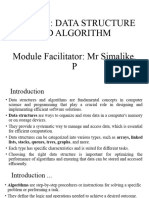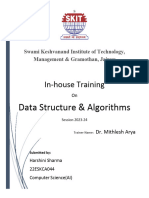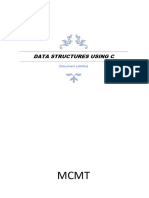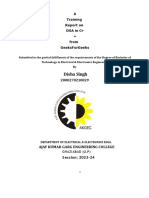0% found this document useful (0 votes)
95 views10 pagesIntroduction To DSA in C
The document introduces fundamental data structures and algorithms concepts in C programming. It covers topics like arrays, pointers, linked lists, stacks, queues, trees, sorting algorithms, searching algorithms and graph algorithms.
Uploaded by
nakshb9211Copyright
© © All Rights Reserved
We take content rights seriously. If you suspect this is your content, claim it here.
Available Formats
Download as PDF, TXT or read online on Scribd
0% found this document useful (0 votes)
95 views10 pagesIntroduction To DSA in C
The document introduces fundamental data structures and algorithms concepts in C programming. It covers topics like arrays, pointers, linked lists, stacks, queues, trees, sorting algorithms, searching algorithms and graph algorithms.
Uploaded by
nakshb9211Copyright
© © All Rights Reserved
We take content rights seriously. If you suspect this is your content, claim it here.
Available Formats
Download as PDF, TXT or read online on Scribd
/ 10






















































































